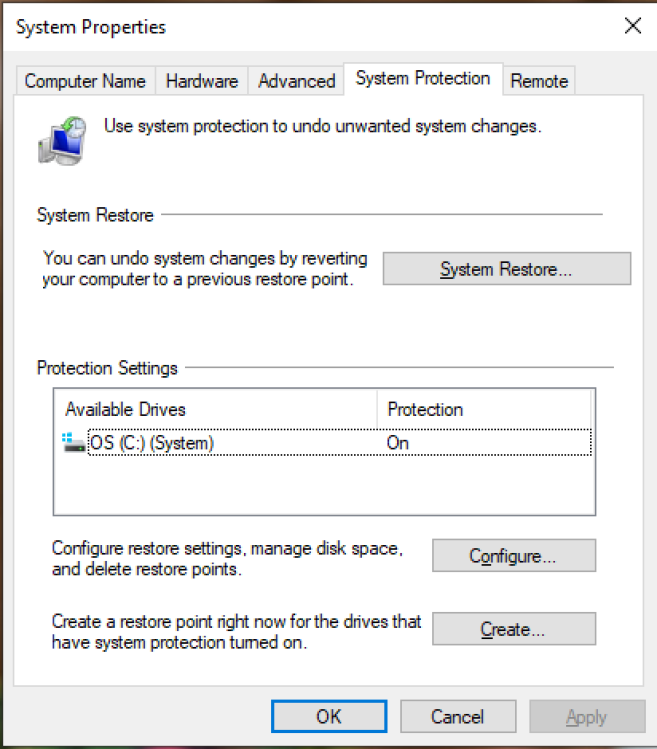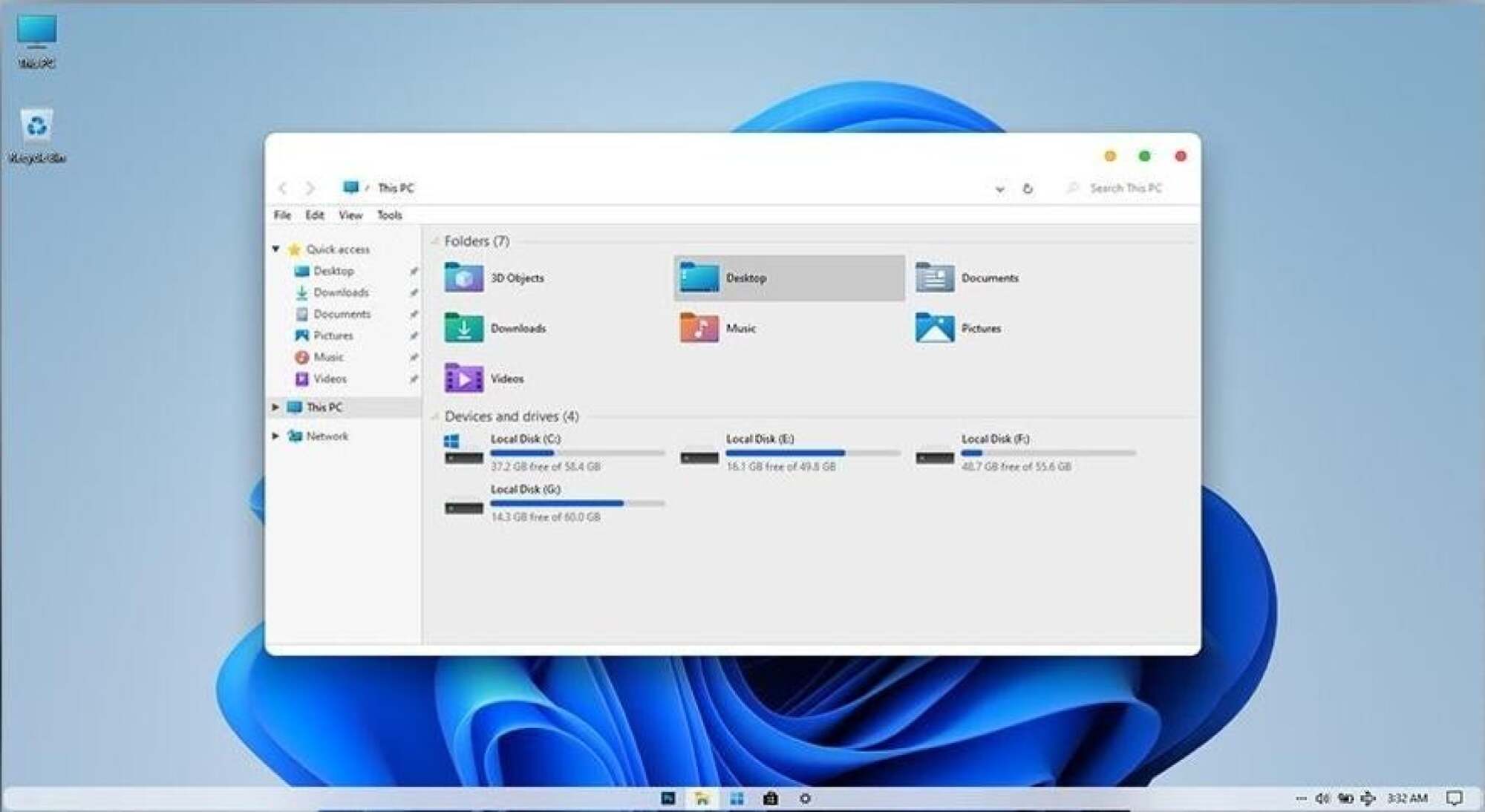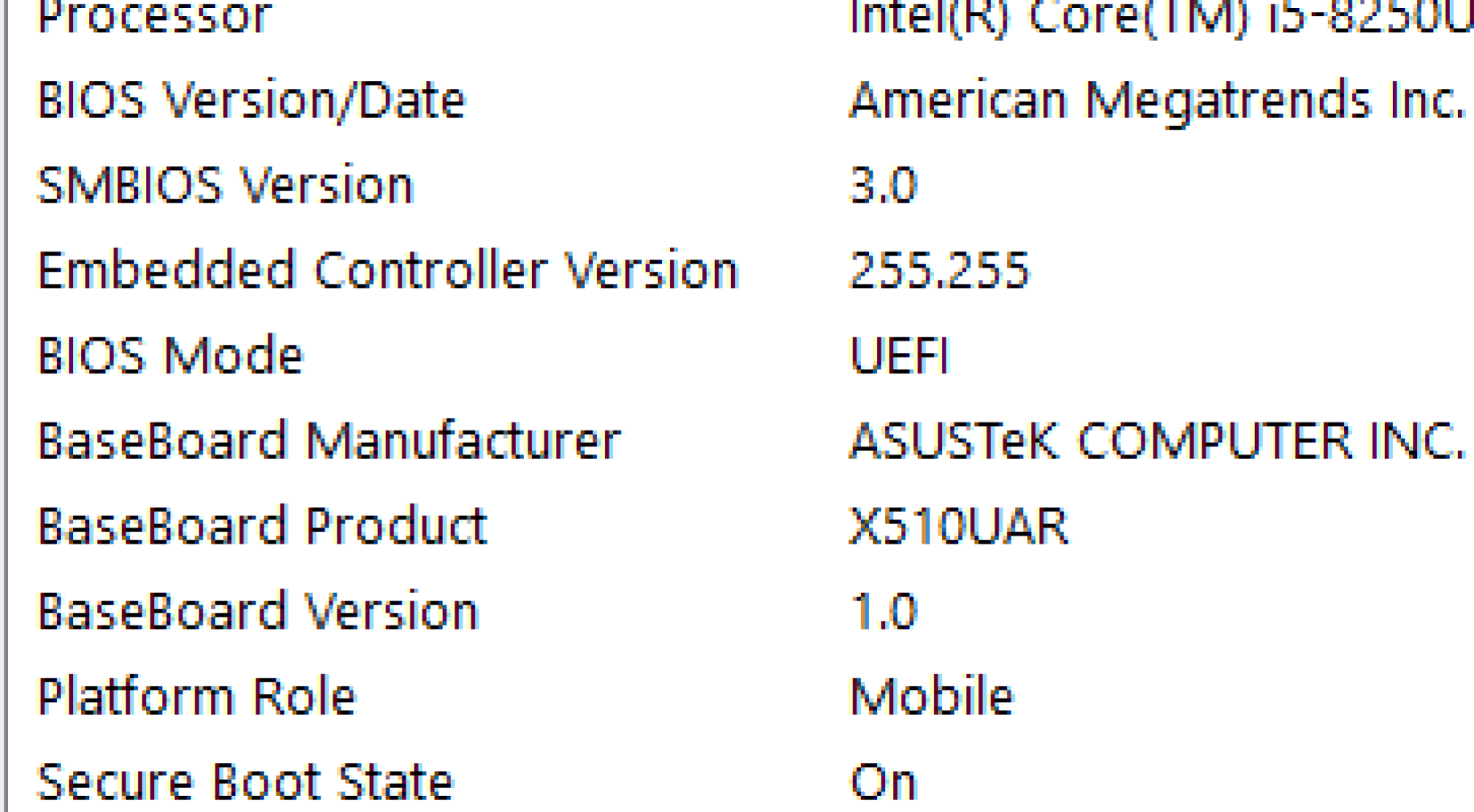- USDT(TRC-20)
- $0.0
Windows 10 is slowly on its way out, as Microsoft has announced it'll stop issuing free software updates after Oct. 14, 2025. At the same time, there are plenty of reasons why you might be hesitant to upgrade to Windows 11 or might not be able to upgrade at all. Luckily, there's a middle ground: giving your Windows 10 PC a fresh coat of paint that makes it look a lot like a brand new Windows 11 computer.
It goes without saying that this won't magically make your PC run Windows 11, but it'll give it a new look and add some useful features from the newer operating system.
Before we move forward, note that you can still upgrade your unsupported PC to Windows 11 pretty easily, but that is not an option for everyone because it won't run as well as Windows 10 does on low-end hardware. At the same time, after the October 2025 end of support deadline, Microsoft has said it will double the price of Windows 10 updates once a year. So while this aesthetic overhaul will help in the meantime, the clock is ticking on getting a new computer.
With that out of the way, here's how you can go about crafting a near-perfect Windows 11 look for your Windows 10 PC.
Before starting, make a new system restore point. Don’t skip this step!
We’ll be changing several important settings, so having a recent restore point ensures you can safely revert to your current configuration with all your files intact in case something goes wrong. It’ll also help revert your changes if you end up not liking the custom desktop look later on.

Credit: Brendan Hesse
If you end up needing to use the restore point, go back to the System Properties menu using the steps above, then click System Restore and follow the on-screen instructions.
Next, we’ll make Windows 10 look more like Windows 11—including the new taskbar and start menu, the rounded folder and taskbar corners, new icons and backgrounds, and more.
To do this, you’ll need to install a custom, third-party desktop theme and icon set based on Windows 11, which takes a lot more work than simply installing the theme from the Microsoft Store. If you’d rather just give Windows 11 a quick, temporary test drive, there’s a way to see the OS’s new interface first-hand without installing anything. That said, if you want a fuller experience (and can’t install the beta), a custom theme is your best option.

Credit: Vin Star (via YouTube)
Before we can apply the custom theme, however, you need to install several third-party apps the theme requires to run.
There’s a lot to install, but don’t feel too overwhelmed; full installation instructions for each app or file are available on each of the download pages listed below, and all of these apps are open-source and/or certified safe to use.
Here’s what you’ll need:
Once the prerequisite apps are installed on your PC, it’s time to make it look like it’s running Windows 11. For this, we’ll be using niivu’s Windows 11 for Windows 10 theme (it just requires a free DeviantArt account). Niivu’s installation instructions are available here, but here’s the simplified version:
By this point, your Windows 10 desktop should look pretty close to the default Windows 11 theme, but there are a few optional tweaks you can make to get it even closer:
Again, these are optional mods, but they’ll make Windows 10 look and act even more like Windows 11.
The upshot of Windows 11’s strict hardware requirements is that it’s a much more secure operating system—at least on paper. The combo TPM (Trusted Platform Module) and SecureBoot requirements should help keep Windows 11 devices safe from malware, ransomware, and remote take-overs.
Some Windows 10 PCs already have a TPM and support SecureBoot. Of course, that means these computers can probably run Windows 11 if desired, but still, it’s worth checking to see if your PC can use these features.
Enabling your TPM or SecureBoot will add extra security to your PC at the hardware level, but Windows 10 will often disable them by default. We’ve already covered how to check for and enable your PC’s TPM (if you have one), so let’s talk about SecureBoot—besides, it’s more likely your PC will support this feature.
SecureBoot prevents apps from installing if the code is not properly verified, and will prevent processes from taking over your device during startup, so it’s definitely a worthwhile feature if it’s available to you.
Here’s how to check if you can use it:

Credit: Brendan Hesse
In either case, it’s possible to enable UEFI and Secure Boot from your startup BIOS menu. Doing so will differ based on your motherboard and its firmware, but a quick Google search should point you in the right direction.
However, a word of caution: Only change your PC’s BIOS settings if you’re absolutely certain you know what you’re doing. And even if you do, it’s always possible changing to UEFI or enabling Secure Boot could cause major issues. If it works, you won’t run into any issues. But if it doesn’t, you’ll need to resort to some drastic measures to reset your motherboard and regain access to your PC. This includes popping open your PC and temporarily removing the motherboard’s battery. And if you screw this up, you’ll end up with an unusable PC.
Enabling SecureBoot and your PC’s TPM (if you have one) will get you closest to Windows 11’s baseline security features, but there’s a lot more you can do to safeguard your Windows 10 PC and all the apps and files on it. Here’s a quick checklist:
As I’ve said a few times already, you can’t get Windows 10 to mimic Windows 11 in every way. But if you enable these extra security layers and take the time to apply the custom themes and UI mods, it’ll be easy to fool yourself into thinking it’s the real thing.
Faking Windows 11 is nice option for those of us who can’t upgrade just yet—but don’t feel left out. Windows 11 is still going through plenty of growing pains, so Windows 10 is a perfectly fine place to be while its successor figures itself out.
Full story here:
It goes without saying that this won't magically make your PC run Windows 11, but it'll give it a new look and add some useful features from the newer operating system.
Before we move forward, note that you can still upgrade your unsupported PC to Windows 11 pretty easily, but that is not an option for everyone because it won't run as well as Windows 10 does on low-end hardware. At the same time, after the October 2025 end of support deadline, Microsoft has said it will double the price of Windows 10 updates once a year. So while this aesthetic overhaul will help in the meantime, the clock is ticking on getting a new computer.
With that out of the way, here's how you can go about crafting a near-perfect Windows 11 look for your Windows 10 PC.
Step 1: Create a restore point
Before starting, make a new system restore point. Don’t skip this step!
We’ll be changing several important settings, so having a recent restore point ensures you can safely revert to your current configuration with all your files intact in case something goes wrong. It’ll also help revert your changes if you end up not liking the custom desktop look later on.

Credit: Brendan Hesse
Search for Restore using the Windows task bar.
Select Create a Restore Point from the search results to open the System Properties menu.
In the System Protection tab, select your hard drive and make sure Protection is set to On. If it’s off, click Configure, then turn on system protection.
With system protection turned on, highlight the drive from the list, then select Create.
Add a description for the new restore point, then click Create.
Wait for the backup process to finish.
If you end up needing to use the restore point, go back to the System Properties menu using the steps above, then click System Restore and follow the on-screen instructions.
Step 2: Make Windows 10 look like Windows 11
Next, we’ll make Windows 10 look more like Windows 11—including the new taskbar and start menu, the rounded folder and taskbar corners, new icons and backgrounds, and more.
To do this, you’ll need to install a custom, third-party desktop theme and icon set based on Windows 11, which takes a lot more work than simply installing the theme from the Microsoft Store. If you’d rather just give Windows 11 a quick, temporary test drive, there’s a way to see the OS’s new interface first-hand without installing anything. That said, if you want a fuller experience (and can’t install the beta), a custom theme is your best option.

Credit: Vin Star (via YouTube)
Before we can apply the custom theme, however, you need to install several third-party apps the theme requires to run.
There’s a lot to install, but don’t feel too overwhelmed; full installation instructions for each app or file are available on each of the download pages listed below, and all of these apps are open-source and/or certified safe to use.
Here’s what you’ll need:
SecureUXTheme: This app allows you to install third-party Windows 10 themes without affecting your system files.
OldNewExplorer: Changes the look and feel of the Windows explorer menus.
StartisBack ($4.99; free trial available): Adds a better start menu based on Windows 7’s. The full version is a $4.99 one-time fee, but the trial version can be used indefinitely (albeit with limited features). You only need the free trial to use the custom Windows 11 theme.
Stardock Curtain mod: Rounds out folder windows on Windows 10, like they are on Windows 11.
RoundedTB mod on the Windows Store: Adds rounded edges to your taskbar.
Once the prerequisite apps are installed on your PC, it’s time to make it look like it’s running Windows 11. For this, we’ll be using niivu’s Windows 11 for Windows 10 theme (it just requires a free DeviantArt account). Niivu’s installation instructions are available here, but here’s the simplified version:
First, you need to figure out which version of Windows you’re on. Press Windows key + R.
Type “winver” and press enter.
Make note of the version number, then close the window.
Download niivu’s theme from the link above.
Unzip the download file.
In the unzipped folder, open the folder that matches your Windows version.
Open another Windows Explorer window and go to This PC > [drive] > Windows > Resources > Themes and copy over the downloaded files.
Once the files are in the correct folders, right-click on your desktop.
Select “Personalize.”
Under the “Themes” section, select the Windows 11 theme from the list. It should immediately apply to your desktop.
By this point, your Windows 10 desktop should look pretty close to the default Windows 11 theme, but there are a few optional tweaks you can make to get it even closer:
Install niivu’s Windows 11 custom icons for Windows 10 (requires the 7TSP app).
niivu also recommends installing xoblite for enhanced right-click menu functionality, but this isn’t required.
Again, these are optional mods, but they’ll make Windows 10 look and act even more like Windows 11.
Step 3: Upgrade your Windows 10 security options to match Windows 11’s (sort of)
The upshot of Windows 11’s strict hardware requirements is that it’s a much more secure operating system—at least on paper. The combo TPM (Trusted Platform Module) and SecureBoot requirements should help keep Windows 11 devices safe from malware, ransomware, and remote take-overs.
Some Windows 10 PCs already have a TPM and support SecureBoot. Of course, that means these computers can probably run Windows 11 if desired, but still, it’s worth checking to see if your PC can use these features.
Enabling your TPM or SecureBoot will add extra security to your PC at the hardware level, but Windows 10 will often disable them by default. We’ve already covered how to check for and enable your PC’s TPM (if you have one), so let’s talk about SecureBoot—besides, it’s more likely your PC will support this feature.
How to enable Secure Boot
SecureBoot prevents apps from installing if the code is not properly verified, and will prevent processes from taking over your device during startup, so it’s definitely a worthwhile feature if it’s available to you.
Here’s how to check if you can use it:
Search for System information in the Task Bar, then select it from the search results.
In the System Information window, scroll through and check that BIOS Mode is set to UEFI and Secure Boot is set to On.
If Secure Boot is set to Off, then it’s disabled. If it says Unsupported, well, it’s not available for your PC, or your BIOS Mode is set to BIOS.

Credit: Brendan Hesse
In either case, it’s possible to enable UEFI and Secure Boot from your startup BIOS menu. Doing so will differ based on your motherboard and its firmware, but a quick Google search should point you in the right direction.
However, a word of caution: Only change your PC’s BIOS settings if you’re absolutely certain you know what you’re doing. And even if you do, it’s always possible changing to UEFI or enabling Secure Boot could cause major issues. If it works, you won’t run into any issues. But if it doesn’t, you’ll need to resort to some drastic measures to reset your motherboard and regain access to your PC. This includes popping open your PC and temporarily removing the motherboard’s battery. And if you screw this up, you’ll end up with an unusable PC.
Other security features you should turn on
Enabling SecureBoot and your PC’s TPM (if you have one) will get you closest to Windows 11’s baseline security features, but there’s a lot more you can do to safeguard your Windows 10 PC and all the apps and files on it. Here’s a quick checklist:
Enable passwordless sign-ins and two-factor authentication for your Microsoft account.
Enroll in OneDrive ransomware prevention.
Use an encrypted password manager to safeguard your login information.
There are also several security enhancements enterprise users and IT professionals implement if they use Windows 10 on their networks.
As I’ve said a few times already, you can’t get Windows 10 to mimic Windows 11 in every way. But if you enable these extra security layers and take the time to apply the custom themes and UI mods, it’ll be easy to fool yourself into thinking it’s the real thing.
Faking Windows 11 is nice option for those of us who can’t upgrade just yet—but don’t feel left out. Windows 11 is still going through plenty of growing pains, so Windows 10 is a perfectly fine place to be while its successor figures itself out.
Full story here:


